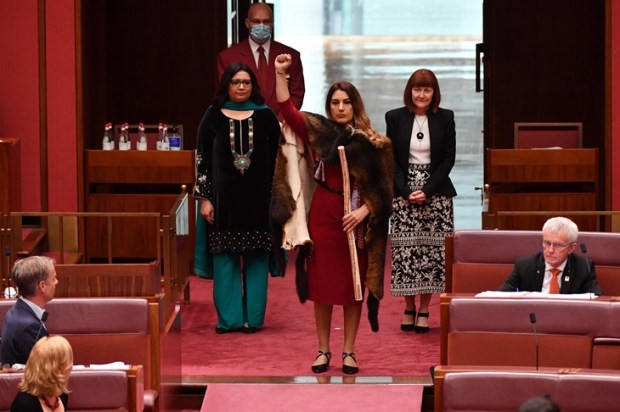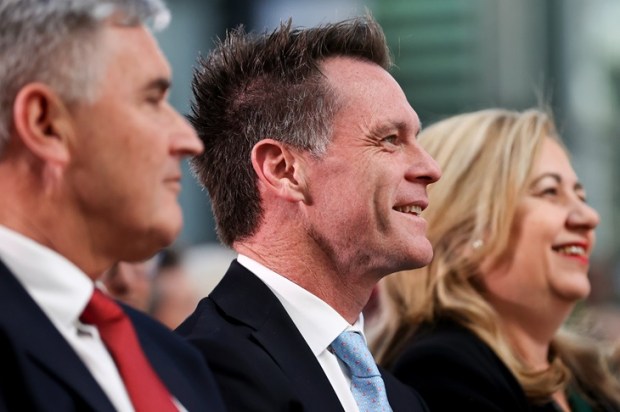The pundits and the Press Gallery tend to discuss election results as if the Australian electorate were a single sentient organism. This body’s collective decision not only chooses the ultimate winner of each election. It also determines the minutiae of the election results: the precise membership of both houses; whether the government will have a significant majority in the lower house or a narrow majority or be dependent on the support of minor parties and independents; whether either the government or the opposition will control the Senate and, if not, who will hold the balance of power.
The detailed results of the election – house-by-house, state-by-state, and seat-by-seat – are said to reflect “the will of the electorate”.
Nothing could be further from how elections actually work. Though some disaffected Liberal supporters may have been pleased to see the Turnbull Government returned with a substantially reduced majority, very few voters actually intended to achieve such a result when they cast their ballots on 2 July.
Those who voted for one or other of the major parties – which was still the preponderance of voters, even though minor parties and independents fared better than in many previous elections – wanted the party of their choice to win, and, in most instances, to win handsomely.
The narrow outcome reflected the fact, not that most people wanted a narrow outcome, but that the number who wanted a better outcome for the ALP roughly equalled the number who wanted a better outcome for the Coalition. Accordingly, to speak of “the will of the electorate” is nonsense.
Statistically, the “average voter” lives in a household with exactly 3.17 bedrooms occupied by 2.53 family members. He is the type of “guy” which few of us, excepting perhaps Lieutenant-General David Morrison, could relate to with complete equanimity: the “average voter” was born with one ovary and one testicle (or, to be more precise, 1.005 ovaries and 0.995 testicles).
The same “average voter” wants a Senate in which the balance of power will apparently be shared between Pauline Hanson, Jacqui Lambie, Derryn Hinch, Nick Xenophon (and up to two of his running-mates) plus a handful of Greens. In short, such an “average voter” is an entirely mythical construct.
The reality is that the overwhelming majority of voters – including the (roughly) two-thirds who voted for either Liberal/National or ALP candidates in the Senate – want a Parliament which actually works.
If, as presently seems likely, the will of the majority is to be stymied, it will be thanks principally to the combined contributions of the 8.4 per cent who voted for the Greens (electing 6 or more senators nationwide), and the 3.2 per cent who voted for the Nick Xenophon Team (likely to return three senators in South Australia), along with the 4.3 per cent vote attracted by Pauline Hanson, 1.9 per cent for Derryn Hinch, and 0.5 per cent for Jacqui Lambie. This is entirely the result of a voting system which produces what Paul Keating, with characteristic panache, called “unrepresentative swill”.
Without question, proportional representation based on voters casting a single transferable vote in a multiple-member voting district – what is known in Australia as “the Hare-Clark system” – is the fairest method of democratic representation yet devised by human ingenuity. It was pioneered in Tasmania’s Legislative Assembly in 1907, and has since been adopted for the ACT legislature and the upper houses of the New South Wales, Victorian, Western Australian and South Australian Parliaments, as well as many legislative bodies in other countries, including Eire, Northern Ireland and Malta. But in most of these instances voting districts return a much smaller number of representatives than the Senate: five in Tasmania, the ACT, Victoria and Malta; either three or five in the Irish Republic; and six in Western Australia and Northern Ireland.
The International Institute for Democracy and Electoral Assistance has noted, “Most scholars agree, as a general principle, that district magnitudes of between three and seven seats tend to work quite well …”. The results are distorted if the number is higher than seven. Yet, for the Senate, each state returns 12 senators. In order to secure election, this requires a “quota” of just one-thirteenth of the total ballot, made up of first preference votes and flow-on preferences from other candidates or parties. In Tasmania, where almost 330,000 formal votes were cast for the 2016 Senate election, just 25,300 votes were required to secure election.
It is said that AFL is the world’s only sporting code in which you can still score a point for missing the goal. But at least the point for a “behind” in an AFL match requires a near miss. If Senate election rules applied in the AFL, a player who attempted to kick a goal from the centre circle would be awarded a point even when the ball falls 75 metres short of the goal line.
It is widely assumed that these features of the Senate voting system are constitutionally entrenched, therefore unchangeable. But, in fact, different systems for electing senators have existed at different times since federation. Until 1919, there was a first-past-the-post or “winner takes all” system. Between 1919 and 1948, there was a system of preferential block voting which, in practice, produced similar results. The present system of proportional representation has only existed since 1948.
Section 7 of the Constitution merely requires that “The Senate shall be composed of senators for each State, directly chosen by the people of the State”. It adds that the voters in each state are to vote as one electorate, but only “until the Parliament otherwise provides”. Apart from these requirements, no particular feature of the present system of election is set in concrete.
The most attractive reform to the Senate voting system would be one which retains the benefits of proportional representation – so we do not have states returning 12 Labor or 12 Coalition senators – but requires that a party (or independent candidate) would have to muster substantially more than the present quota of 7.7 per cent in order to secure election. This is easily achieved by dividing each state into three senate electoral districts, each returning four senators or two at a half-Senate election.
Such a reform would not leave minor parties and independent candidates out in the cold. But it would require them to achieve at least one-fifth of the vote at a double dissolution election, or one-third at a half-senate election, in order to secure representation. Of course, the single transferable vote form of preferential voting could be retained, allowing minor parties and independents to cobble together the requisite quota with the benefit of flow-on preferences from like-minded candidates.
No doubt this proposal will attract howls of protest from the Richard Di Natales, Nick Xenophons, Jacqui Lambies, Pauline Hansons, and others who have enjoyed the benefits of the present anomalous system. But seriously, do they have a leg to stand on? Is there another advanced democracy in which Lambie could hope to secure one of 76 Senate seats, when her “network” cannot muster even one in 200 of the nationwide Senate vote?
The Australian Greens are proud of the fact that they were, supposedly, the first environmental activist party in the world to secure representation in a national legislature; but this achievement merely reflects the fact that the Australian Senate is the world’s only national legislative house in which a single-issue lobby group could win a handful of seats while barely attracting one vote in every 12.
Under such a reform, it would be good riddance forever to the likes of Ricky Muir (Australian Motoring Enthusiast Party), Bob Day (Family First), David Leyonhjelm (Liberal Democrats), Zhenya Wang (Palmer United), Glenn Lazarus (ex-PUP) and John Madigan (ex-DLP); not to mention the execrable “Human Headline”, Derryn Hinch. Xenophon would probably retain his seat, and both Lambie and Hanson would stand a good chance of holding theirs; but they would have less prospect of parlaying their personal popularity into a swag of seats for supporters and sycophants.
Whether the Greens might continue to dominate the cross-benches would depend entirely on whether Richard Di Natale, Sarah Hanson-Young, Lee Rhiannon, Larissa Waters, Peter Whish-Wilson, and their ilk are able to mix it with the big kids, as Adam Bandt has successfully done in the House of Representatives seat of Melbourne. But perhaps Di Natale is afraid that the Greens’ milquetoast maturity as a potent political force has peaked in the kid safe environment which is the present Senate suckling sandpit
And what of the major parties? Obviously there will be some attraction to the prospect of more paid sinecures for otherwise unelectable members of the party faithful. But, politics being what it is, each of the major parties will be primarily concerned to know how much better off they, and their opponents, will be.
It will take real statesmanship to support a reform which will demonstrably produce a Senate better reflecting the intentions of most voters, and which is bound to make the Parliament more workable – and which, incidentally, will also benefit both sides of the political divide – for fear that one side or the other may possibly secure a short-term advantage.
Anthony Morris QC is a Brisbane barrister
Got something to add? Join the discussion and comment below.
Get 10 issues for just $10
Subscribe to The Spectator Australia today for the next 10 magazine issues, plus full online access, for just $10.

























Comments
Don't miss out
Join the conversation with other Spectator Australia readers. Subscribe to leave a comment.
SUBSCRIBEAlready a subscriber? Log in